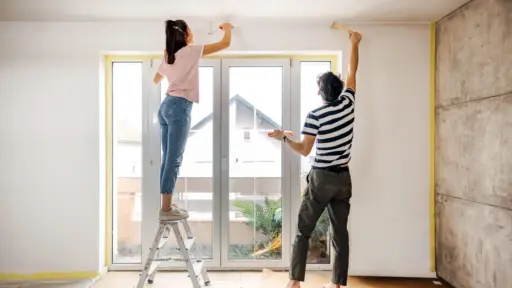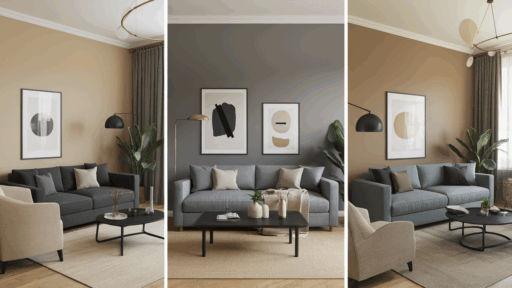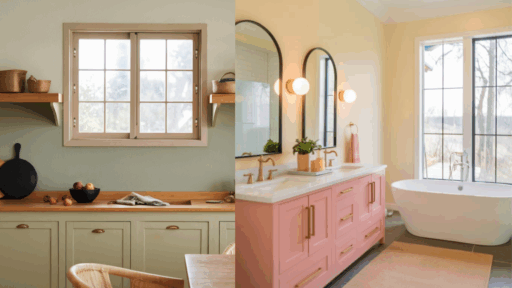Choosing a radiator isn’t exactly the kind of decision that sparks dinner party conversation, but it’s one of those things that quietly shapes the comfort of everyday life. If you get it right, you don’t really notice it—your room just feels… right. But get it wrong, and you’re either layering on jumpers indoors or peeling yourself off the sofa come December.
The good news? Finding the right radiator for a medium-sized room doesn’t require an engineering degree, but it does mean thinking a bit beyond the basics. It’s not just about size or output—it’s about placement, efficiency and how your space is actually used.
What Actually Counts as a “Medium-Sized” Room?
It sounds obvious, but when you’re radiator shopping, “medium-sized” isn’t always as straightforward as it seems. A bedroom measuring 12 square meters and a kitchen of the same size won’t heat the same way. Why? Windows, insulation, ceiling height, and how often the door gets left open all play a role in how hard a radiator has to work.
Generally speaking, a medium-sized room is somewhere in the region of 10 to 20 square meters. But here’s where it gets interesting: the same radiator might perform beautifully in one 15 m² space and struggle in another. That’s why working out the BTU (British Thermal Unit) requirement for your room is essential. Think of it as the heating version of calories—it’s how much energy is needed to keep that space comfortably warm.
Prioritising Efficiency Over Size or Style
It’s tempting to choose a radiator based on how it looks. After all, it’s going to be visible every day. But a good-looking unit that underdelivers on heat is about as useful as a designer umbrella in a hurricane.
The real trick is finding efficient radiators for medium-sized rooms that offer a balance of performance, cost, and design.
But efficiency doesn’t always mean high-tech, either. Sometimes, it’s about smart placement and knowing when to go for a convector over a column design. A double panel convector heats faster and more evenly, especially in rooms that are used intermittently, like home offices or guest bedrooms.
Materials and Build: Does It Really Matter?
Actually, yes. Mild steel radiators are the most common, and for good reason—they’re durable and budget-friendly. Aluminium heats up fast and cools down just as quickly, making it ideal if you’re after speed. Cast iron, on the other hand, holds heat for longer but takes a while to get going.
The build quality also affects longevity and heat output. A poorly manufactured unit might be cheaper upfront but end up being a pain in the long run—either through higher energy bills or constant maintenance.
Also, watch out for cheaper models with thin metal or suspect coatings; they may look the part but rust or leak far sooner than you’d like. And then there’s the humble valve—often overlooked, yet essential for getting the most out of your radiator. Thermostatic valves, in particular, let you fine-tune heat without fiddling with the central thermostat every five minutes.
Wall Space, Furniture and the Underestimated Role of Placement
No matter how efficient your radiator is, it won’t do much good hidden behind a sofa or trapped under a window with heavy curtains. And yet, that’s exactly where they tend to go.
While it’s traditional to install radiators beneath windows to counteract drafts, modern insulation has changed the game. If you’ve got double glazing and decent seals, placing the radiator on an internal wall may actually improve heat distribution. Think about how you move through the room and where the heat will go. Avoid placing radiators behind doors or directly opposite large glass panes if you want to minimise energy loss.
And one final, often ignored tip: don’t cram furniture right up against your radiator. It not only blocks heat circulation, but it can also damage wood or upholstery over time. Leave at least a small gap—you’ll notice the difference.
Final Thoughts
Choosing the right radiator for a medium-sized room doesn’t require a renovation-level rethink. But it does reward a little curiosity. A good radiator doesn’t just warm a space—it supports how you live in it. By paying attention to efficiency, material, and placement, you can turn a practical necessity into a quiet, effective part of your everyday comfort.
It’s a detail, yes, but one that quietly improves everything around it. And frankly, those are the best kind.








